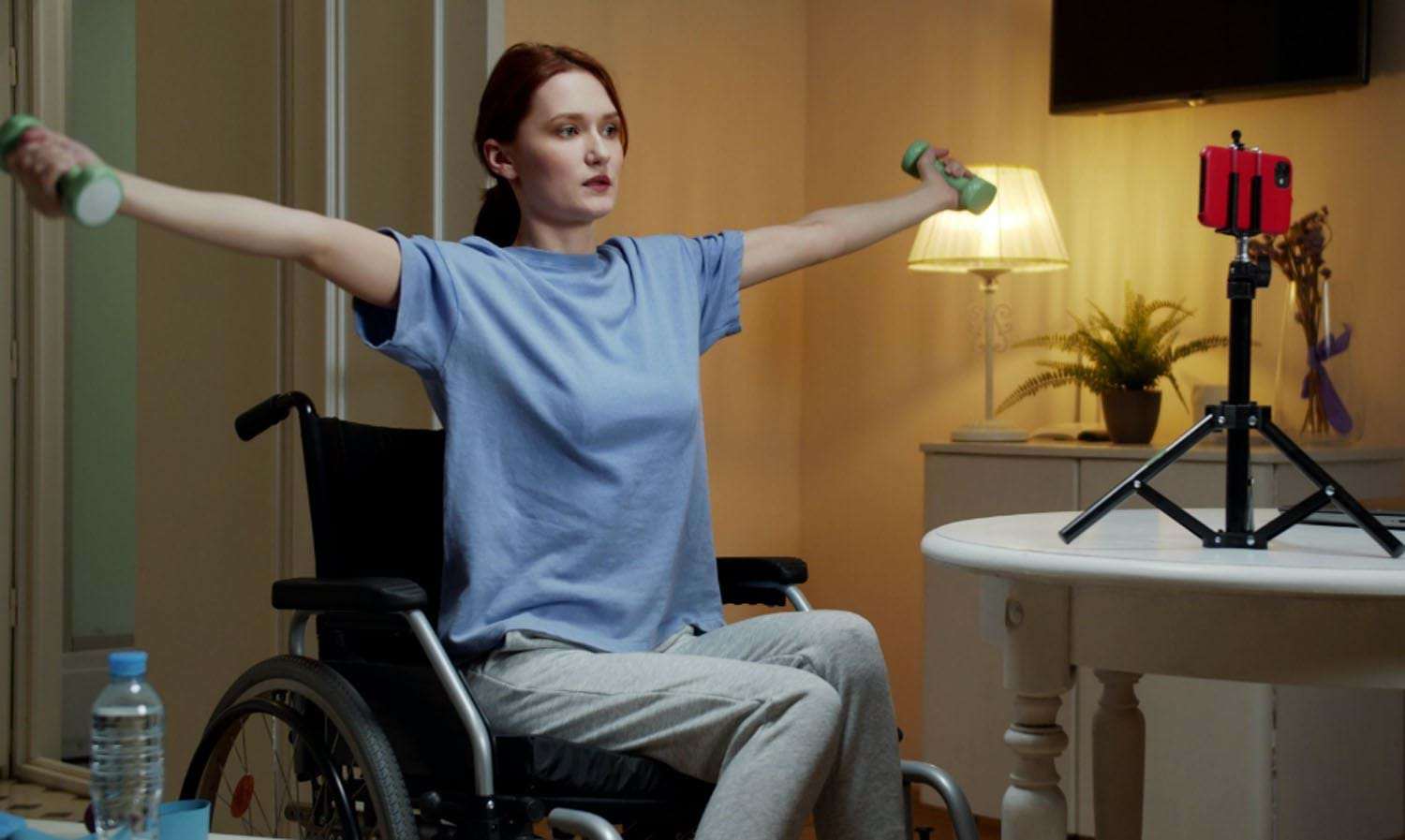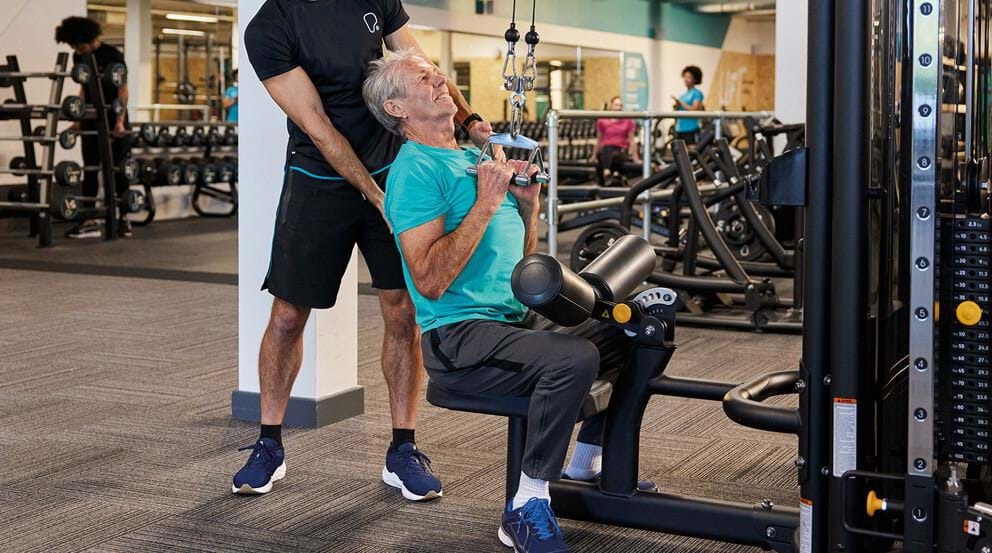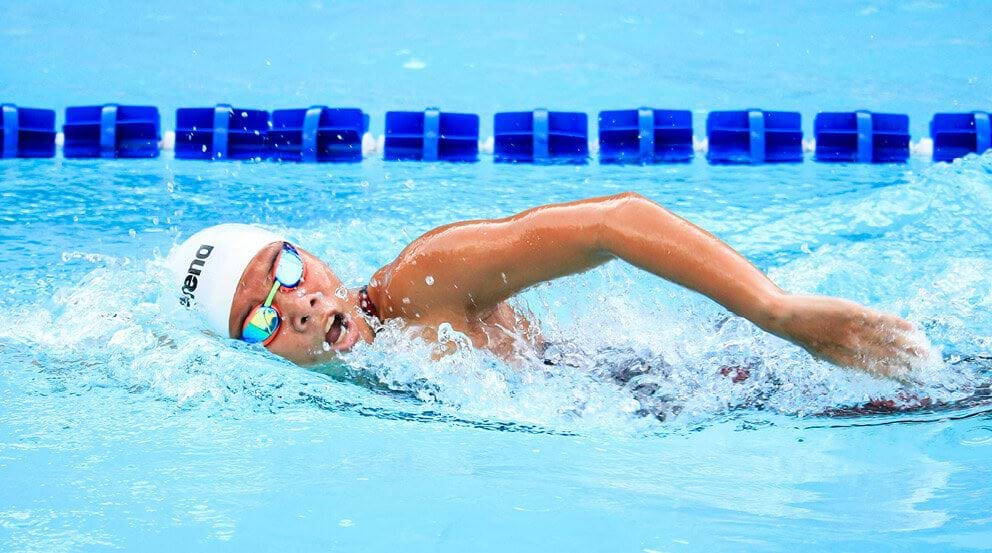Arm and Shoulder Workouts For Wheelchair Users And Seniors

There are many reasons that someone might need to use a wheelchair outside of having a disability, including age, mobility, and injuries. And while some people require full time use of their wheelchair, other people may only need to use it at certain times. Whatever your requirements, we want to help wheelchair users stay active by highlighting exercises that can be performed while being seated.
We've previously looked at core exercises for wheelchair users, and the best wheelchair accessible gym equipment. And we've shared senior-friendly exercises which can be done while seated here.
Here, PureGym Barnstaple Personal Trainer and Physio Assistant Hayley Chapman looks at arm and shoulder exercises for people who use wheelchairs, or for anyone who is unable to stand for long periods of time.
Why work out your arms and shoulders?
Training your arms and shoulders is not limited to aesthetic goals; it has many strength benefits, helping with everyday activities, and for seniors or wheelchair users this can help to increase independence.
For example, having stronger arms helps with activities like driving, food shopping and cleaning, and for wheelchair users specifically, it means having more endurance to propel their wheelchair throughout the day.
Another benefit is that strength training helps to protect against bone loss and muscle atrophy. For seniors, this is particularly important as it can help to prevent osteoporosis, and having stronger bones and muscles means that you are less likely to get injured if you have a fall.
Resistance training can also help to reduce your risk of heart disease by helping to lower blood pressure, body fat, and cholesterol, and it can help to maintain healthy joints.
Shoulder and arm exercises for wheelchair users and seniors
The following exercises can be done while seated, and only require dumbbells, so they can be done either at the gym or at home -- you can swap the dumbbells for heavy household items if you don't want to buy a set.
Included in the workout are a range of single arm exercises; these are a great option for wheelchair users who do not have the full use of their core, or seniors who struggle with balance, as the non-working arm can hold onto the side of the chair. They also allow you to work each side individually to help with muscular imbalances.
Start off with 3 sets of 8 reps and build your way up to 12 reps over time, and then increase the weights to continue to build strength.
Incline Bench Press
This works the pectoral muscles in the front of your chest, the anterior deltoids at the front of your shoulders, and your triceps at the upper back of your arms
- For the exercise position, you want to sit nearer the front of your chair, then lean back slightly and rest your shoulders and upper back on the back of your chair.
- Create an upside-down 'V' shape - instead of 'T' shape - with your elbows, in relation to your shoulders; this will mean instead of your elbows being in-line with your shoulders, they will be more "tucked in" closer to your body.
- Push the weights straight up by extending your arms.
- Hold the dumbbells at the top for a second before slowly lowering them back to the start.
Single Arm Shoulder Press
The shoulder press predominantly works your shoulders, but also helps to strengthen your triceps, chest, and upper back. It can help to build strength and endurance for any overhead movements, like reaching into cupboards.
- Start with shoulders down and back, holding onto the side of your chair with one arm, with the dumbbell in the other.
- Hold your dumbbell around shoulder height. Your elbow should be bent, and slightly further forward than your shoulder.
- Extend your arm straight up to push the dumbbell overheard, stopping before you lock out your elbow.
- Pause before slowly returning back down the starting position.
- This is one rep.
Single Arm Bicep Curls
The biceps is the muscle located at the front of the upper arm, and is used in lifting and pulling movements.
- Hold a dumbbell in one hand with by your side, with your elbow tucked in to the side of your body. Your arm should be fully extended.
- Hold on to the side of your chair with your other hand for balance.
- Keeping your upper arm still, raise the dumbbell to shoulder height by bending your elbow and bringing your forearm up. Keep the motion as controlled as possible.
- Slowly lower the dumbbell back to the start. This is one rep.
Single Overhead Tricep Extension
The triceps is the muscle on the back of your upper arms. They help to extend the elbows and stabilise the shoulders.
- Holding a dumbbell in one hand, extend your arm straight up so you are holding the dumbbell above your shoulder.
- Hold on to the side of your chair with your other hand for balance.
- Keeping your upper arm still, bend your elbow to lower the dumbbell behind you, towards your shoulder.
- Try to keep the elbow from flaring out to the side, aim to keep it "tucked" in, so it is not much wider than shoulder width.
- Pause at the bottom before slowly raising the dumbbell back up to the start.
- This is one rep.
Single Arm Front Raise
Front raises predominately strengthen the front of the shoulders, but also work the upper chest, and can really help to build strong, stable shoulders.
- Hold a dumbbell in one hand, palm facing down, with your arm extended down by your side.
- Use the other hand to hold the side of your chair.
- Keeping your shoulders back, slowly raise the dumbbell up to shoulder height. Keep your arm straight throughout.
- Pause before returning back to the starting position.
- This is one rep.
Try doing these exercises 2-3 times a week, making sure to leave at least a day's rest in between each workout. You should begin to see an improvement in strength within a few weeks to months, especially if you are continuing to increase the reps or weights each week.
You can find more arm and shoulder exercises here. If you want tailored advice, working with a Personal Trainer is a great way to find exercises that work for your body.


